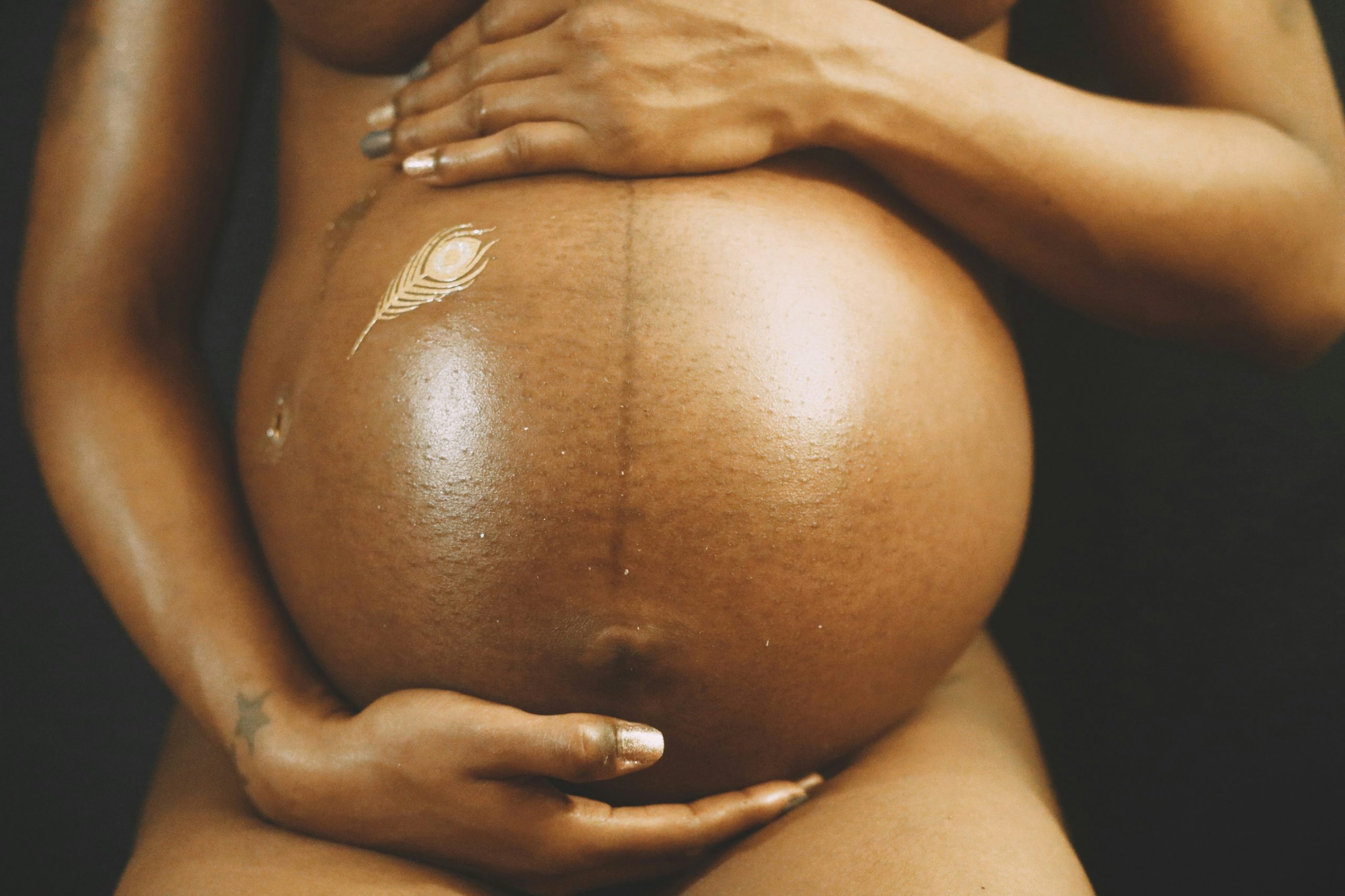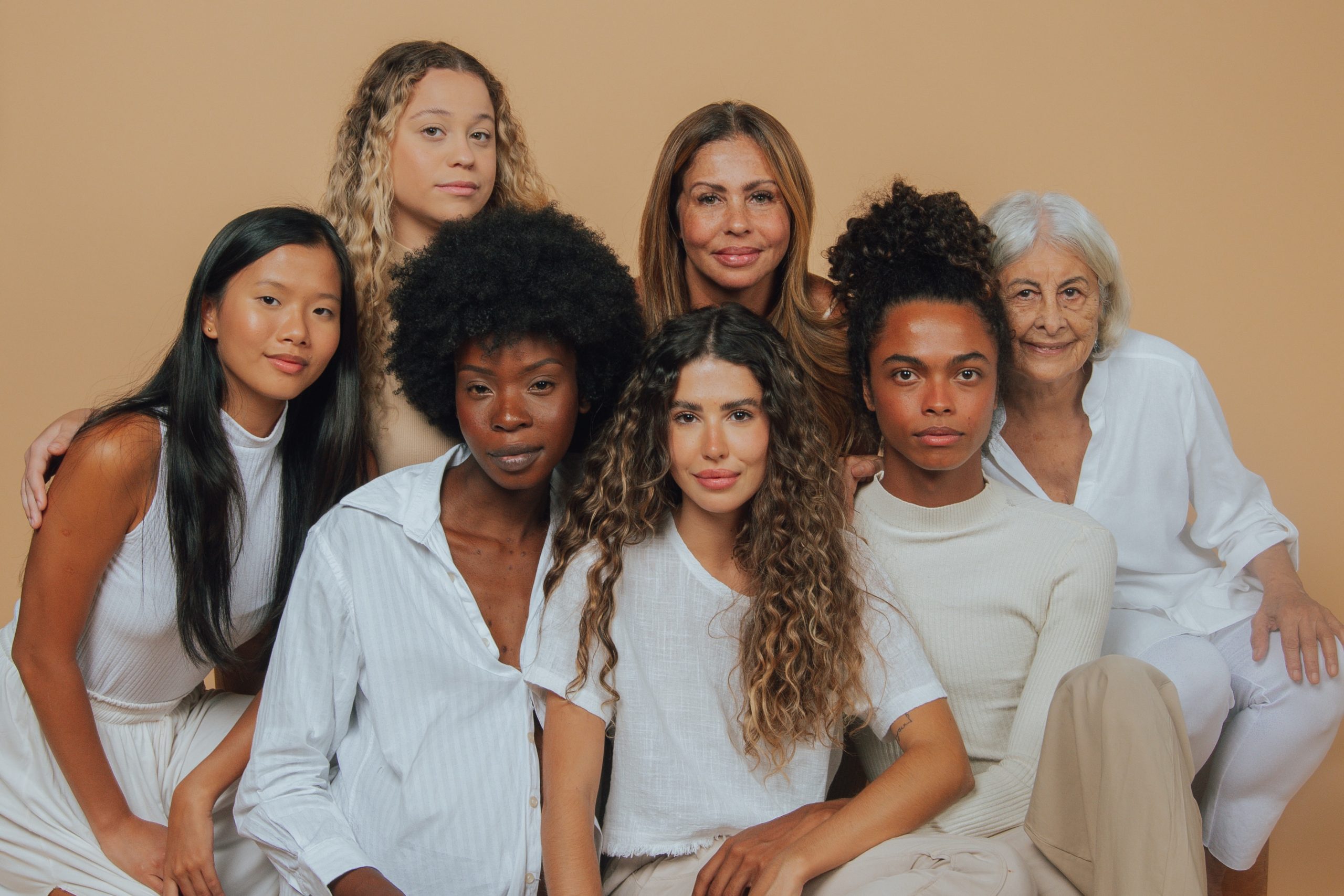By The Happiness 360 Editorial Team
Photo by Domo
Opening Notes from Traciana
Right now, as you read these words, one of nature’s most extraordinary processes may be unfolding within you. From a meeting of two microscopic cells comes a complexity that rivals the formation of galaxies—your baby’s development from conception to birth. This isn’t just medical information; it’s the story of how your child is becoming themselves, one remarkable day at a time.
-Traciana
The Moment Everything Changes
• She stares at the positive pregnancy test, knowing that somewhere inside her, a cluster of cells smaller than the period at the end of this sentence is already working with breathtaking precision. In just three weeks, this tiny beginning will have a beating heart. The magnitude of what’s happening feels both impossible and inevitable.
• At eight weeks, he watches the ultrasound screen in wonder as their baby—no bigger than a raspberry—moves tiny arms that weren’t there just days ago. The grainy image shows a head, a body, the unmistakable shape of human life emerging from what began as two cells finding each other in the darkness.
• She feels the first flutter at eighteen weeks and realizes this isn’t gas or hunger—it’s her baby saying hello. After months of knowing intellectually that someone is growing inside her, this moment makes it undeniably real. A person she’s never met but already loves is stretching, turning, practicing for life outside the womb.
• At thirty-six weeks, they watch their baby hiccup on the ultrasound screen and burst into laughter. This little person has been hiccupping for months, practicing breathing, getting ready to take that first breath of air. The miracle of development suddenly feels personal, immediate, and beautifully human.
Your baby’s journey from conception to birth is one of the most remarkable stories ever told—and it’s happening inside you right now.
The Secret Beginning: When Life Sparks Into Existence
Weeks 1-2: The Impossible Journey Begins Pregnancy officially starts counting from your last menstrual period, but the real magic happens around week 2 during ovulation. Picture this: your egg, released from the ovary, begins a journey down the fallopian tube. Somewhere in that narrow passage, one sperm out of millions finds its way to your waiting egg. The moment they meet, something extraordinary happens—two separate cells become one, and your baby’s unique genetic blueprint is written in an instant.
This single cell, your zygote, contains all the information needed to create every part of your baby—their eye color, their height, whether they’ll have your nose or your partner’s smile. It’s smaller than a grain of salt, yet it carries the complete instruction manual for building a human being.
Week 3: The Miracle of Attachment Your tiny cluster of rapidly dividing cells—now called a blastocyst—completes an epic journey to your uterus and burrows into the uterine wall like a seed finding fertile ground. This moment of implantation is when pregnancy truly begins. Your body starts producing hCG, the hormone that will turn that pregnancy test positive and flood your system with the signals that say: “We’re growing a baby.”
Even now, when you might not know you’re pregnant, your baby is sending chemical messages throughout your body, beginning the beautiful conversation between mother and child that will continue for the next nine months.
Week 4: The Blueprint Comes Alive Your baby—now officially an embryo—is about the size of a poppy seed, but don’t let the size fool you. The most crucial development in human existence is happening right now: the neural tube that will become your baby’s brain and spinal cord begins forming. Their heart starts developing from what began as a simple cluster of cells.
Imagine: in just two weeks since conception, your baby has gone from a single cell to a complex organism with the beginnings of a nervous system and heart. The building blocks of consciousness and love are taking shape.
Week 5: The First Heartbeat This week brings one of pregnancy’s most emotional milestones—your baby’s heart begins to beat. It’s not yet the strong, four-chambered heart they’ll be born with, but it’s pumping and circulating blood through their tiny body. At your first ultrasound, you might hear this heartbeat—a sound that will instantly make everything real.
Your baby is now about the size of a sesame seed, and arm and leg buds are starting to appear. If you could see them, you’d recognize the unmistakable shape of human life emerging from cellular chaos.
Week 6: A Face Begins to Emerge The miracle of facial development begins this week. Your baby’s eyes start forming—not yet the eyes that will look up at you after birth, but the beginning of the windows to their soul. The inner ear develops, meaning your baby is starting to build the structures they’ll use to hear your voice.
Their heart is becoming more sophisticated, developing into four chambers and beating with increasing regularity. Arms and legs become more defined, though they’re still tiny buds reaching toward becoming the hands that will hold yours.
Week 7: When Everything Accelerates Your baby’s brain is growing at an astonishing rate—100,000 new brain cells form every minute. Let that sink in: right now, as you read this, your baby might be developing the neurons that will one day store their first memory of your face.
Hands and feet are developing, and the earliest traces of fingers and toes appear. The umbilical cord—their lifeline to you—is fully formed and functioning. Your baby is about the size of a blueberry, but their complexity rivals anything in nature.
Week 8: The Transformation Complete By the end of this week, your baby will have completed one of the most remarkable transformations in biology. They graduate from embryo to fetus, having developed all their major organs and systems. They have distinct fingers and toes, facial features that are becoming more defined, and muscles that allow them to move.
At the size of a raspberry, your baby can move their tiny body, though you won’t feel these first movements for weeks to come. But they’re there—your child is already exploring their first home, practicing the movements they’ll use to crawl, walk, and eventually run into your arms.
The Hidden Months: When Your Baby Becomes Themselves
Week 9: The Dance Begins Your baby’s muscles are developing, and with them comes their first movements—tiny, graceful gestures you can’t feel yet but that mark the beginning of their unique way of moving through the world. Their head is still large compared to their body, giving them an endearing, almost otherworldly appearance.
Sex organs begin developing this week. If you could peer inside, you might be watching the biological foundation form for the child who will one day surprise you with their first word, their first step, their first “I love you.”
Week 10: The Orchestra Tunes Up All your baby’s vital organs are present and beginning their lifelong performance. Their kidneys start producing urine—their first biological work. Their stomach produces digestive juices, preparing for that first taste of milk. If this baby is a boy, testosterone begins flowing, starting to shape not just their body but influencing the brain that will one day think thoughts uniquely their own.
Your baby is now the size of a kumquat, but their complexity would astound the greatest engineers.
Week 11: The Growth Explosion In just one week, your baby nearly doubles in size. Hair follicles form across their scalp—the beginning of hair that might be curly like yours or straight like your partner’s. Fingernails begin growing, tiny and perfect.
Their diaphragm develops this week, practicing for that first breath they’ll take outside your body. Even now, months before birth, your baby is rehearsing for life in the world beyond the womb.
Week 12: The Little Person Emerges Your baby’s reflexes are awakening. They can curl their tiny fingers, make sucking motions with their mouth, and their little body responds to touch. If you could tickle their palm, they might close their hand around your finger—the same reflex that will grip your finger so tightly after birth.
Their kidneys are working, their liver produces bile, and if you’re having an ultrasound, you might catch a glimpse of whether you’re having a son or daughter. The mystery that began twelve weeks ago with two invisible cells is starting to reveal itself.
The Awakening: When Your Baby Discovers the World
Weeks 13-16: The Great Opening
Week 13: Your baby’s vocal cords form this week—the beginning of the voice that will call you “mama” or “papa” for the first time. Their bones are hardening from soft cartilage into the skeleton that will support their first steps. Their head, once enormous compared to their body, begins finding proportion as they grow into themselves.
Week 14: Facial expressions begin! Your baby can squint, frown, and grimace. They’re practicing the faces they’ll make when they taste something sour, when they’re concentrating, when they see you for the first time. Their liver begins producing bile, and their spleen helps create red blood cells—their body is becoming a self-sustaining miracle.
Week 15: Your baby’s bones grow stronger, and they can move all their joints and limbs with increasing coordination. Their sense of hearing develops, meaning they’re beginning to perceive the symphony of your body—your heartbeat, your voice, the rumble of your stomach. You are their first music.
Week 16: This week brings a profound moment: your baby’s eyes can perceive light filtering through your belly. Though their eyelids remain closed, they’re already beginning to experience the difference between light and dark. They may be sucking their thumb—a self-soothing behavior that shows remarkable developmental sophistication.
Weeks 17-20: The Halfway Miracle
Week 17: Fat begins developing under your baby’s skin, giving them the beginning of that adorable newborn chubbiness. They can hear sounds from outside the womb now—your voice, music, even loud noises might make them jump. Their fingerprints form this week, those unique swirls that will identify them for their entire life.
Week 18: Your baby develops a sleep-wake cycle, though it might be opposite to yours—they may become most active when you’re trying to rest. Their ears function well enough to hear your heartbeat, a sound that will comfort them for months after birth. This rhythmic whooshing has been their constant companion, their first lullaby.
Week 19: The brain undergoes extraordinary specialization this week, developing distinct areas for smell, taste, hearing, vision, and touch. Your baby is becoming capable of experiencing the world through all their senses, preparing for the rich sensory experience of life outside the womb.
Week 20: Halfway there! Your baby swallows amniotic fluid and produces meconium—practice for the digestive system they’ll use to process milk. Around this time, you might feel those first magical movements, the flutter that announces: “I’m here, and I’m getting ready to meet you.”
Weeks 21-24: The Dance Becomes Real
Week 21: Your baby can hear your voice distinctly now and may respond to familiar sounds with movement. When you speak, they’re listening, learning the rhythm and melody of the voice that will comfort them throughout their life. They might even respond to your partner’s voice or favorite music.
Week 22: Your baby can feel you touching your belly and may respond to gentle pressure. This is your first real physical conversation—you press, they might press back, establishing the connection that will grow deeper every day.
Week 23: Hearing becomes more sophisticated. Your baby might startle at loud noises, their tiny heart rate increasing with surprise. They’re learning that the world beyond the womb has different sounds, preparing for the audio landscape of life outside.
Week 24: This week marks viability—if born now, your baby has a fighting chance of survival with medical support. Their lungs produce surfactant, the substance that will allow them to breathe air. Every day from now on, their chances of thriving outside the womb improve dramatically.
The Final Preparation: Your Baby Gets Ready for the World
Weeks 25-27: Personality Emerges
Week 25: Your baby’s hands are fully developed and incredibly active. They’re exploring their face, touching their nose, playing with the umbilical cord—their first toys. These movements aren’t random; they’re the beginning of the curiosity and exploration that will define their personality.
Week 26: Your baby’s eyes open for the first time! They can see light filtering through your belly and may even respond to bright lights by moving away. Their immune system begins developing, borrowing antibodies from you to protect them in their first months of life.
Week 27: Your baby’s brain becomes incredibly active, developing sleep patterns that include REM sleep—they might be dreaming already. They can recognize your voice distinctly from other sounds, and hearing it may calm their movements. You are already their source of comfort.
Weeks 28-32: The Incredible Brain
Week 28: Your baby’s brain develops billions of neurons in an explosion of connectivity that rivals the formation of galaxies. They can blink, cough, and hiccup—if you see hiccups on an ultrasound, you might be watching your baby practice breathing. Their bones harden everywhere except their skull, which stays soft for their journey through the birth canal.
Week 29: Your baby’s muscles and lungs develop rapidly, and their kicks and punches have real force now. These movements aren’t just reflexes—they’re your baby building the strength they’ll need for life outside the womb.
Week 30: Your baby’s bone marrow takes over producing red blood cells, making them more independent by the day. The fine hair (lanugo) that covered their body begins disappearing as fat accumulates, giving them that adorable newborn look.
Week 31: All five senses function now. Your baby processes information, tracks light, and perceives signals from taste, touch, smell, hearing, and sight. They’re already experiencing a rich sensory world inside you.
Week 32: Your baby’s bones continue hardening, but their skull remains wonderfully flexible for birth. Their fingernails and toenails grow, and they might scratch their own face—their first self-inflicted baby battle wound.
Weeks 33-36: Almost Ready
Week 33: Your baby’s immune system strengthens as your antibodies cross the placenta, giving them protection for their first months of life. Their pupils can constrict and dilate in response to light—they’re literally seeing their world change.
Week 34: The central nervous system matures, and your baby’s lungs are nearly ready for that first breath of air. Fat continues accumulating under their skin, preparing them for temperature regulation outside their warm body.
Week 35: Your baby’s kidneys are fully developed, and their liver can process waste products. Their reflexes are coordinated enough for survival—if born now, they could likely breathe, suck, and swallow on their own.
Week 36: Your baby sheds most of the vernix (the waxy coating) and lanugo, though some may remain at birth like a reminder of their time in the water world of your womb.
Weeks 37-40: Ready for Hello
Week 37: Your baby is now considered full-term. Their lungs are mature enough to function in air, and they’re practicing breathing movements daily. Every breath practice brings them closer to that first cry that will announce their arrival.
Week 38: Your baby’s organs are fully developed and functioning beautifully. They gain about half an ounce per day, mostly in fat that will help them regulate temperature and provide energy for their first days of life outside you.
Week 39: Your baby’s brain continues developing rapidly and will keep growing throughout their first years of life. They’re ready for life outside the womb, though they’re still gathering strength and fat for the transition.
Week 40: Your due date arrives! Your baby typically weighs 6-9 pounds and measures 19-22 inches long. They’re ready to be born, though babies arrive safely anywhere from 37-42 weeks. Their journey from invisible cells to this fully formed little person is complete—and your journey as their parent in the outside world is about to begin.
What You Might Experience During Each Phase
First Trimester: Your Body Adapts. While your baby undergoes rapid development, you might experience morning sickness, fatigue, breast tenderness, and frequent urination. These symptoms are caused by rapidly changing hormone levels and your body’s adaptation to pregnancy.
Second Trimester: The Sweet Spot Many people feel their best during this period. Morning sickness often subsides, energy returns, and you’ll likely start feeling your baby’s movements between weeks 16-25 (earlier in subsequent pregnancies).
Third Trimester: Preparing for Birth. Physical discomforts increase as your baby grows larger. You might experience heartburn, difficulty sleeping, frequent urination, and Braxton Hicks contractions. Your baby’s movements may feel stronger but less frequent as space becomes limited.
Milestones to Look Forward To
First Heartbeat (Week 5-6) Your baby’s heart begins beating, though you might not hear it until your first prenatal appointment around week 8-12.
First Ultrasound (Week 8-14) Seeing your baby for the first time is a profound moment. You’ll see their shape, movements, and receive confirmation of your due date.
Gender Reveal (Week 15-20). If you choose to find out, your baby’s sex can typically be determined via ultrasound during the anatomy scan around week 20.
First Movements (Week 16-25) Those first flutters, often described as bubbles or butterflies, are your baby’s earliest movements you can feel.
Anatomy Scan (Week 18-22) This detailed ultrasound checks your baby’s development and can detect many potential issues early.
Viability (Week 24) This milestone marks when babies have a good chance of surviving if born prematurely with medical support.
Lung Maturity (Week 34-37) Your baby’s lungs develop the ability to function independently, though they continue maturing until birth.
The Miracle You’re Witnessing
Right now, as you read these words, your baby might be practicing breathing movements for their first breath of air, or opening and closing their eyes in preparation for seeing your face. They might be listening to your voice, already finding comfort in the sound that will soothe them for years to come.
In just 40 weeks, your baby develops from a single cell into a complex human being with:
- A heart that has beaten over 54 million times before birth
- A brain with 86 billion neurons, more than there are stars in the Milky Way
- 206 bones that grew from nothing
- Lungs that will take their first breath and cry out to announce their arrival
- Tiny hands that will reach for yours
- Eyes that will search for your face
- A voice that will call you by name
This isn’t just biology—it’s the miracle of becoming human, happening inside you one day at a time.
Your baby’s development is a story of incredible precision and breathtaking creativity. From the moment sperm meets egg, an intricate dance of genetic instructions creates something entirely new—a person who has never existed before and will never exist again. They carry parts of you and your family’s history while being completely, uniquely themselves.
Every flutter you feel, every hiccup on the ultrasound, every measurement at your prenatal appointments is a chapter in this extraordinary story. Your baby isn’t just growing—they’re becoming themselves, developing the quirks and characteristics that will make them who they are.
When you finally meet face to face, you’ll be looking at someone who has spent months preparing for this moment, practicing movements, listening to your voice, getting ready to love you back with the same intensity you’ve been loving them.
The journey from conception to birth is one of the most remarkable transformations in the universe—and it’s happening right inside you, creating the person you’ll love for the rest of your life.
Every pregnancy develops uniquely. This timeline represents typical fetal development, but your healthcare provider will monitor your baby’s individual growth and celebrate each milestone with you along the way.
About the Happiness 360 Editorial Team: The H360 Editorial Team researches modern professional challenges, synthesizing insights from psychology, neuroscience, and business strategy to provide actionable intelligence for high achievers.
Disclaimer: This content is for informational purposes only and is not intended as medical or psychological advice. If you're experiencing persistent overwhelm, please consult qualified mental health professionals for personalized guidance.
Read our full disclaimer →






















0 Comments for “Your Baby’s Journey: Understanding Development from Conception to Birth”